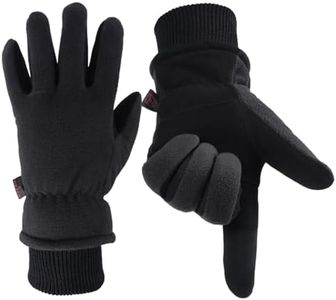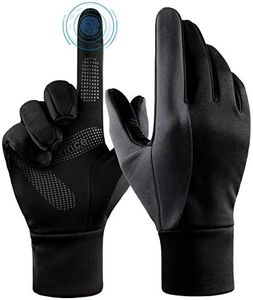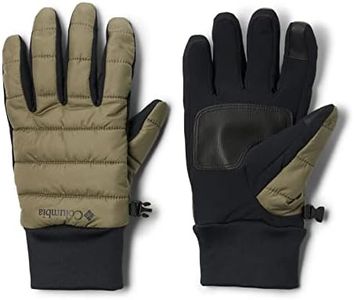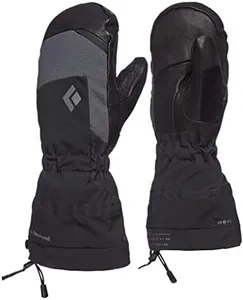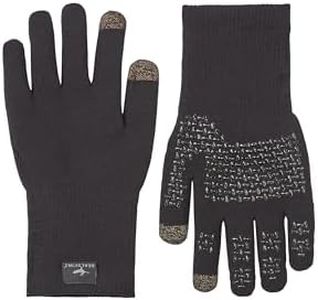We Use CookiesWe use cookies to enhance the security, performance,
functionality and for analytical and promotional activities. By continuing to browse this site you
are agreeing to our privacy policy
10 Best Hiking Gloves
From leading brands and best sellers available on the web.Buying Guide for the Best Hiking Gloves
Picking the right hiking gloves is important to keep your hands protected and comfortable during outdoor adventures. The best gloves for you will depend on the conditions in which you'll be hiking—such as temperature, terrain, and whether you’ll be encountering rain or snow. Think about what features matter most for your typical hikes, like warmth, grip, or water resistance. Carefully comparing the main characteristics of hiking gloves helps you choose a pair that meets your personal needs and makes your experience much more enjoyable.MaterialThe material of hiking gloves determines their warmth, durability, comfort, and how well they handle water. Common materials include fleece, wool, synthetic blends, and leather. Fleece is warm and dries quickly but isn’t very windproof. Wool offers natural warmth even when damp. Synthetic materials often balance warmth, flexibility, and moisture wicking. Leather provides extra durability and enhanced grip but needs more care. Consider what environment you’ll mostly hike in: for wet or cold conditions, look for materials that insulate when wet and dry fast; for mild weather, lightweight, breathable fabrics may be enough.
InsulationInsulation is what keeps your hands warm inside the gloves. The types of insulation range from thin, minimal lining suitable for mild or cool conditions, to thick synthetic or natural fibers for colder climates. Light insulation is best if you hike in mild weather or do high-energy activities, as your hands will warm up quickly. Medium insulation balances warmth and dexterity, making them good for most hiking seasons. Heavy insulation is needed for winter or very cold environments where it’s important to retain as much heat as possible. Pick insulation based on the lowest temperature you expect to encounter.
Water ResistanceWater resistance refers to the gloves’ ability to keep your hands dry in rain, snow, or damp conditions. Some hiking gloves are labeled water-resistant while others are fully waterproof, typically with a membrane or coating. Water-resistant gloves will shed light moisture, such as drizzle, but might soak through in heavy rain. Waterproof gloves protect better in wet situations but can sometimes be less breathable. If you hike mostly in dry weather, water resistance might be enough, but in wet climates or winter, consider waterproof gloves to avoid cold, wet hands.
Grip and DexterityGrip is how well you can hold onto objects, such as trekking poles or rocks, and dexterity is how easily you can move your fingers while wearing the gloves. Some gloves add textured palms or thumb sections to improve grip, while thicker, bulkier gloves can reduce dexterity. Lightweight or midweight gloves tend to give you better finger control. Choose gloves with good grip and dexterity if you need to perform tasks with your hands or when you want to be able to take photos, tie laces, or open snacks without taking the gloves off.
BreathabilityBreathability is how well the gloves allow moisture (from sweat) to escape. Breathable gloves keep your hands from feeling clammy or damp during intense activity. Thinner fabrics and specialized linings increase airflow, but may let in cold air. Less breathable gloves provide better wind or water protection, but can lead to sweaty hands. If you hike hard or in changing conditions, breathable gloves will keep your hands feeling fresher and more comfortable.
Fit and AdjustabilityThe fit of hiking gloves refers to how snugly they sit on your hands, and adjustability involves closures like straps or drawcords that help secure the fit and block out cold or debris. If gloves are too tight, they restrict blood flow and reduce warmth, while loose gloves make it harder to handle objects and trap less heat. Some gloves offer adjustable wrists or cuffs—these help with sealing out elements or fitting over jacket sleeves. Consider your hand shape and whether you wear a watch or use liner gloves, and look for a fit that lets you move comfortably but doesn’t feel baggy.
Touchscreen CompatibilityTouchscreen compatibility means gloves have special fingertips that allow you to use phones or GPS screens without taking the gloves off. This feature is valuable in colder conditions, so you can use devices without exposing your hands. Some gloves only have touchscreen material on the index finger and thumb, while others offer it on all fingertips. If you frequently navigate with apps or take photos, look for gloves with reliable touchscreen support.
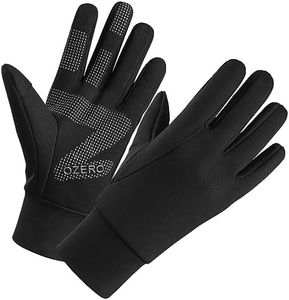
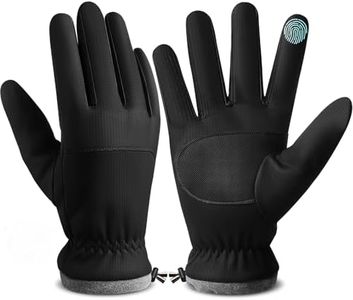
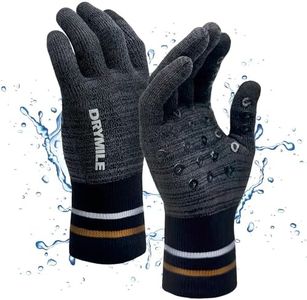
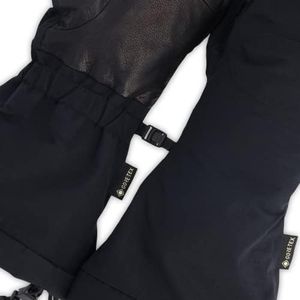
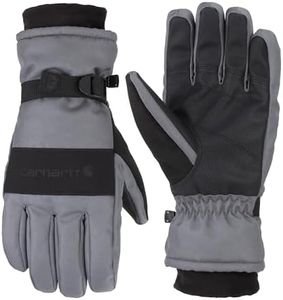
![The North Face E-Tip Gloves, Unisex, Fleece, Cold Protection, Smartphone Compatible, Touch Panel Compatible, [FW23] Black, S](https://images-proxy.bestreviews.guide/mjB_atS-3ioYNtOs_pkMZamZChM=/0x300/https://m.media-amazon.com/images/I/31-1NbrSCRL._AC_CX679_.jpg)

